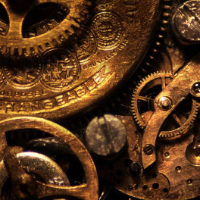
This is a written guide to the Script called ScenarioSwitcher. It teaches some more advanced usages of the script. There is also a basic guide that can be found under: <a href="https://app.roll20.net/forum/post/6223040/guide-sc" rel="nofollow">https://app.roll20.net/forum/post/6223040/guide-sc</a>... The script post itself is found at: <a href="https://app.roll20.net/forum/post/6217778/script-s" rel="nofollow">https://app.roll20.net/forum/post/6217778/script-s</a>... INDIVIDUAL TOKEN DESTINATIONS Starting with v1.5.0 one single Command Token can handle sending tokens to different layers at the same time . With the Command Token Bar1 Value one can choose the default layer for all tokens this Command Token affects, just as before. It normally switches all tokens between the DL layer and this default Layer. But now of all the affected tokens the GM can also tell some of the tokens to go to another layer instead. it overrides the default layer for those specific tokens. For each individual token to be switched outside the default layer, Bar1 Max of that token tells the script what will happen with this specific token: object_layer - for switching this token between DL layer and object layer. map_layer - for switching this token between DL layer and map layer. gm_layer - for switching this token between DL layer and gm layer. anything else and the token will still be switched to the Command Token's default layer. this includes leaving the field empty. How can this be useful? well, one might want to change the background map and add a few creatures at the same time. sending them all to map layer limits the tokens that are supposed to be used as objects, hiding their names and status markers as well as their bars. And sending everything to object layer, makes this layer very crowded. Now you can send everything where it can be used best. And this is just one of the possibilities... you can send changes to the map and add a few notes on the gm layer etc. A specific example: lets say the party goes upstairs in a barn. The GM can add the now visible rooves and windows and floors to the map layer with the Command Token's Bar1 Value set to map_layer and send the few chickens up there to the object layer by setting the Bar1 Max to object_layer for each chicken token. STATE INDICATORS For more complex situations one might want to have a quick idea in which scenario/state the page is. Using the above technique it is possible to create tokens that indicate the current state, State Indicator Tokens. Using the barn example: I will create two tokens, both flagged with UpperFloor, both with the Bar1 Max set to gm_layer. One of these tokens I will name: The party is at the downstairs level of the barn. The other: The party is at the upstairs level of the barn. I send the first State Indicator token to the DL layer. With a Command Token and appropiately flagged tokens I can now set-up the whole scenario where the party is upstairs - all of it represented by the flag UpperFloor. Now when I am finished I can switch between the scenario of being upstairs getting turned on or off. If it is on, the State Indiator Token that is visible will have the text "The party is at the upstairs level of the barn." By hiding all the upstairs tokens with a swicth the State Indicator Token that is visible will have the text "The party is at the downstairs level of the barn." Although most of the tokens switched around will be visible to players, these two will land in the gm layer, only visible to the GM. This works because the script takes the matching flagged tokens in the DL layer and puts them in the destination Layer - but before that it finds all the flagged tokens in the destination layer (matching and not-matching) and put them in the DL layer. FEEDBACK AND QUESTIONS All Feedback, questions and suggestions are welcome. Post them under the original post for the script , or if that thread gets closed create a new post and add [gui8312] and [ScenarioSwitcher] to the post.
